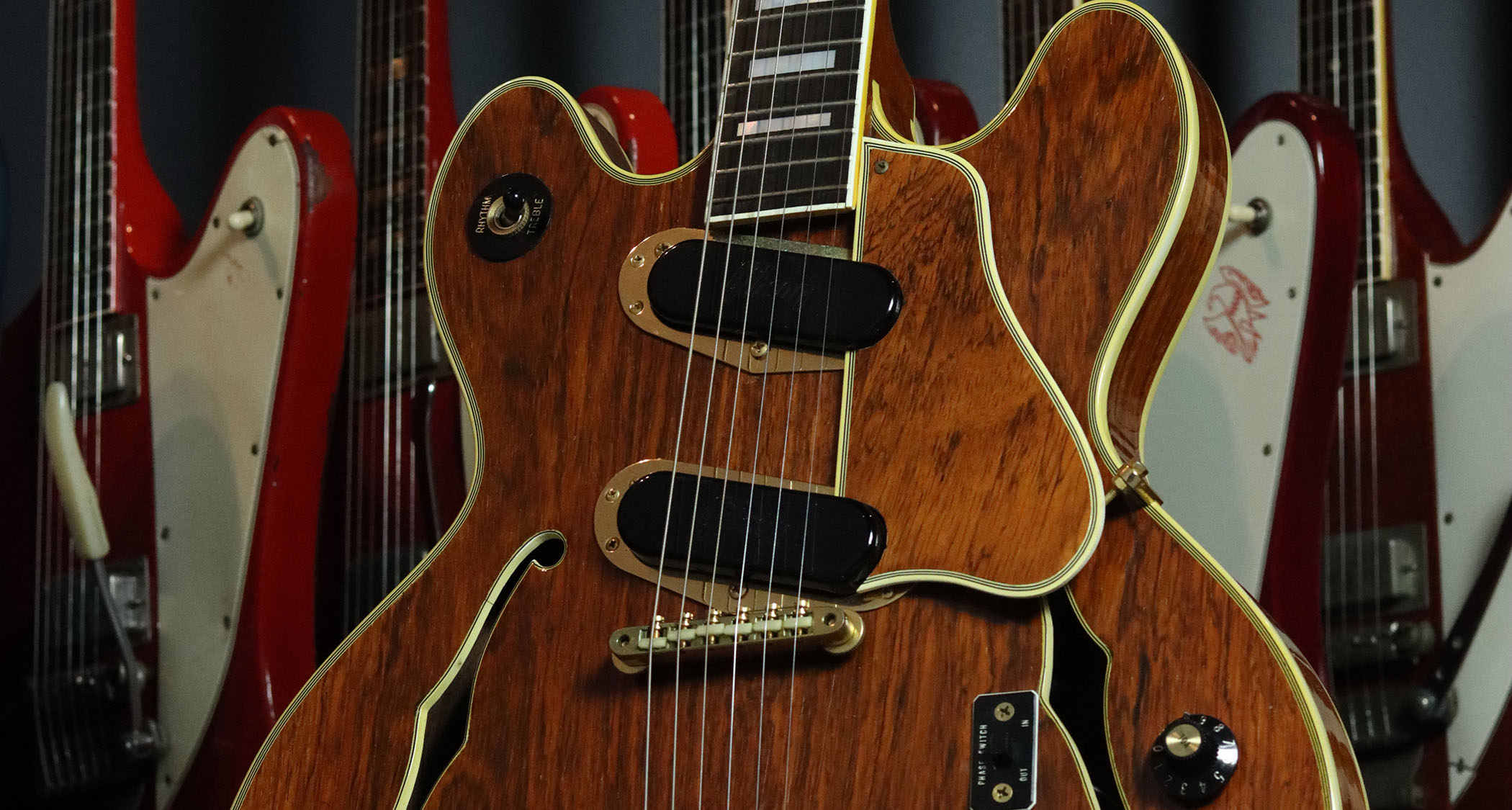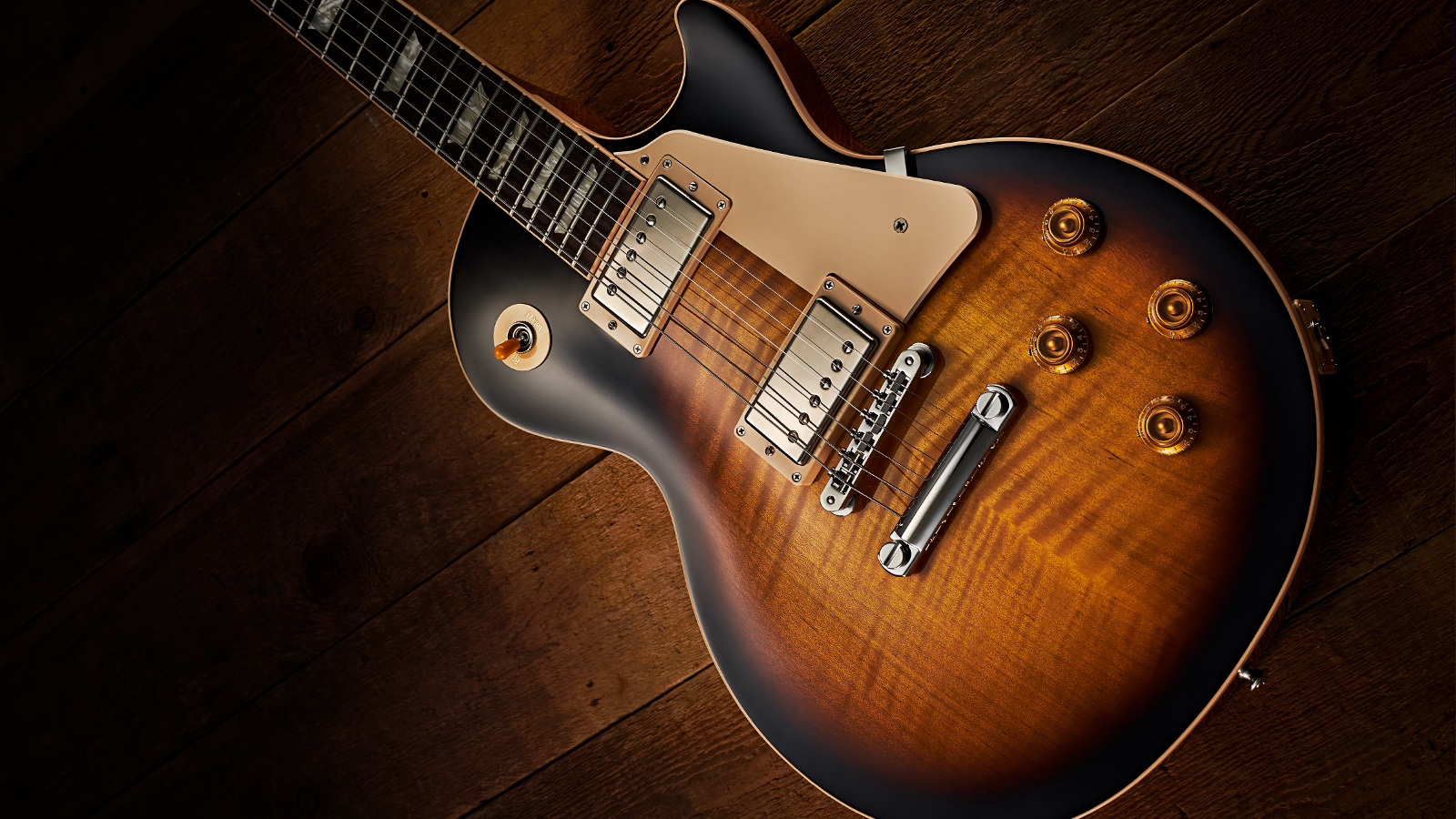
Whether it’s to get better tone, fix tuning problems or make your guitar look as close as possible to a 1950s Goldtop or ’Burst, Gibson Les Pauls are among the most modified of all the classic electric guitar models.
Here are our top 20 tips for making your Les Paul the best it can be.
1. Tailpiece Swap
The tailpiece can have a noticeable influence on the tone and dynamics of a Les Paul. Throughout the vintage era, Gibson tailpieces were cast using a cheap alloy called zamak that contains aluminium, magnesium and copper, and they’re about a quarter of the weight of current Gibson zinc tailpieces.
Zamak produces a warm, woody and airy vintage-style tone, but some may prefer the midrange heft and sustain of zinc or brass tailpieces. Vintage tailpieces are very expensive, but aluminium tailpieces from the likes of Faber, Gotoh and TonePros sound very similar.
For the full-on vintage experience, ensure the tailpiece studs are steel and measure the spacing carefully before ordering to avoid imperial/metric mismatches.
2. Top Wrapping
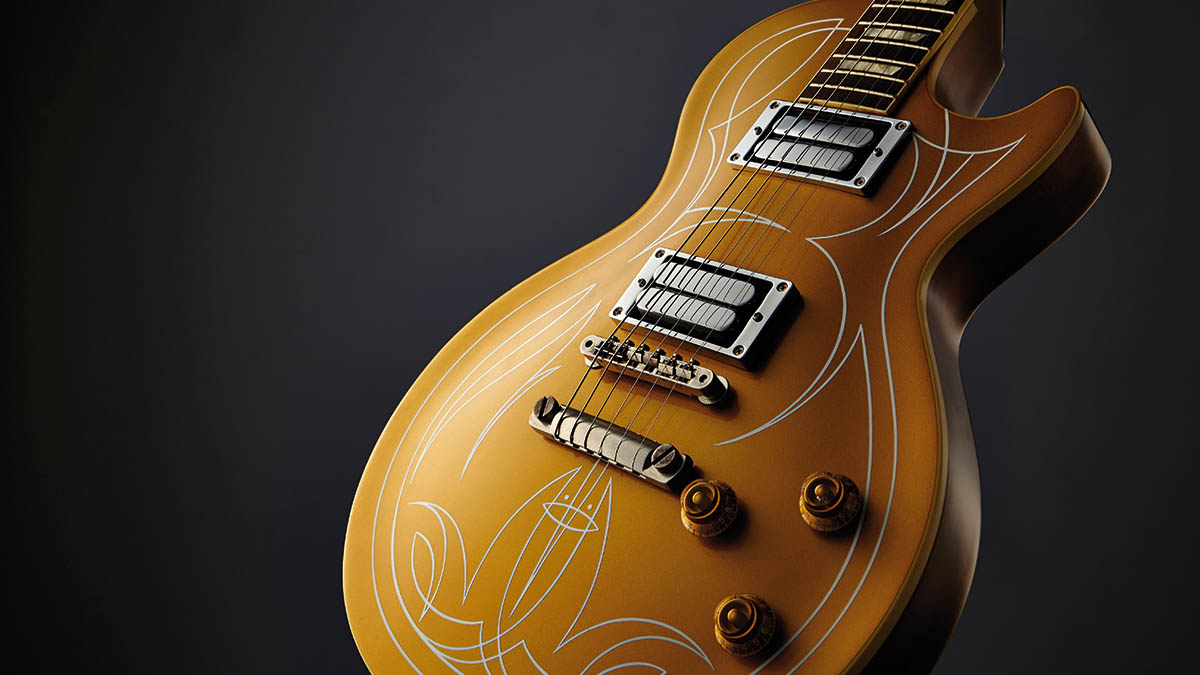
Wrapping the strings around the top of stop tailpieces has become increasingly popular, with Billy Gibbons and Joe Bonamassa being high-profile proponents. So, what’s it all about? Some refer to a slinkier feel with easier bends due to the reduced break angle over the bridge, and tonal improvements are claimed, too.
Having tried top wrapping and stringing up with the strings passing through the tailpiece in the conventional manner, we find the latter generates more body resonance.
All the latest guitar news, interviews, lessons, reviews, deals and more, direct to your inbox!
Perhaps added downwards pressure on the bridge facilitates tone transfer, and if there is something to the slinkier playing feel, you can achieve similar results by using lighter strings. Trying it costs nothing, but consider threading the new strings through some ball ends to prevent sharp wraps from coming over the tailpiece and poking your hand.
3. Tune-O-Matic
The bridge has a particularly strong effect on tone. Vintage ABR-1s were moulded from zamak and had brass saddles. Originals have become prohibitively expensive, but Kiss My Strings and Four Uncles offer modern equivalents. Aluminium bridges sound similar and are usually cheaper, and vintage obsessives can source threaded brass posts while they’re at it.
Nashville bridges are zinc, which sounds somewhat different. If you want to convert a Nashville-equipped Les Paul to ABR-1 specs, you’ll need thumbwheel posts with a different diameter. Brown’s Guitars Factory, Faber and others offer conversion kits. Alternatively, TonePros bridges come with grub screws that fix onto the posts for optimum stability.
4. Bridge Saddles
1950s ABR-1-equipped Gibsons had nickel-plated brass saddles. Starting with the thinline models, from around 1963 Gibson started using nylon saddles. It may not seem like an obvious tone-enhancing material, but nylon saddles produce a warmer, mellow and sweet tone. Joe Bonamassa has specified a mix of saddles on some signature models, with brass for the wound strings and nylon for the plain ones.
Players seeking extra brightness and definition should investigate titanium saddles. Graph Tech saddles are also popular among players who tend to snap strings. When ordering saddles, confirm that they are compatible with your bridge, and establish whether your saddle screws are metric or imperial.
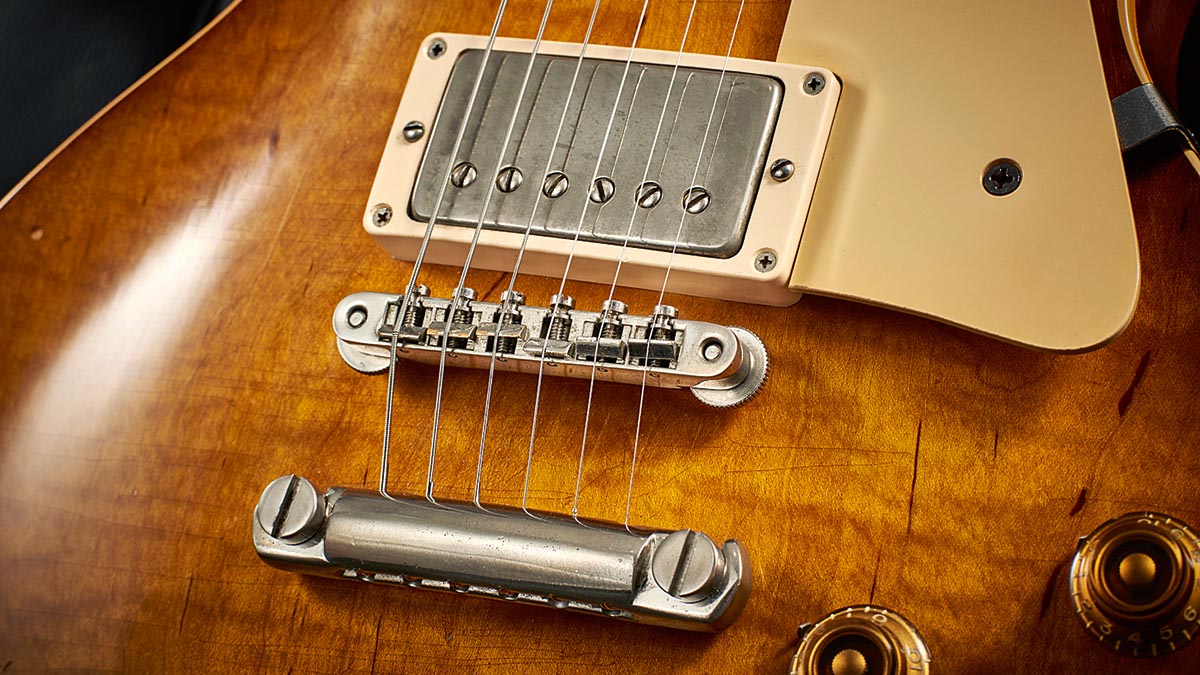
5. Wraptail Rethink
Between 1953 and 1956 all Les Paul Standards had wraptail bridges. Besides little intonation-adjusting grub screws threaded through each ‘ear’, they’re almost identical to stop tailpieces, but they serve as both a tailpiece and bridge.
Many consider them sonically superior to the tune-o-matic/tailpiece combo that Gibson introduced on the Les Paul Custom, but Gibson almost certainly developed the ABR-1 to improve on the wraptail’s approximate intonation.
Like stop tailpieces, vintage wraptails were cast from zamak, but aluminium offers a reasonable alternative and brass offers fatter mids and extra sustain.
Like stop tailpieces, vintage wraptails were cast from zamak, but aluminium offers a reasonable alternative and brass offers fatter mids and extra sustain. Modern options combine vintage looks with mouldings that provide some degree of intonation compensation.
Others have individually adjustable saddles for the best of both worlds. Also consider locking studs that prevent wraptails from tilting forward. And if you’re lucky enough to own an all original and therefore unplayable ’52 or early ’53 Les Paul, MojoAxe and Glaser offer solutions.
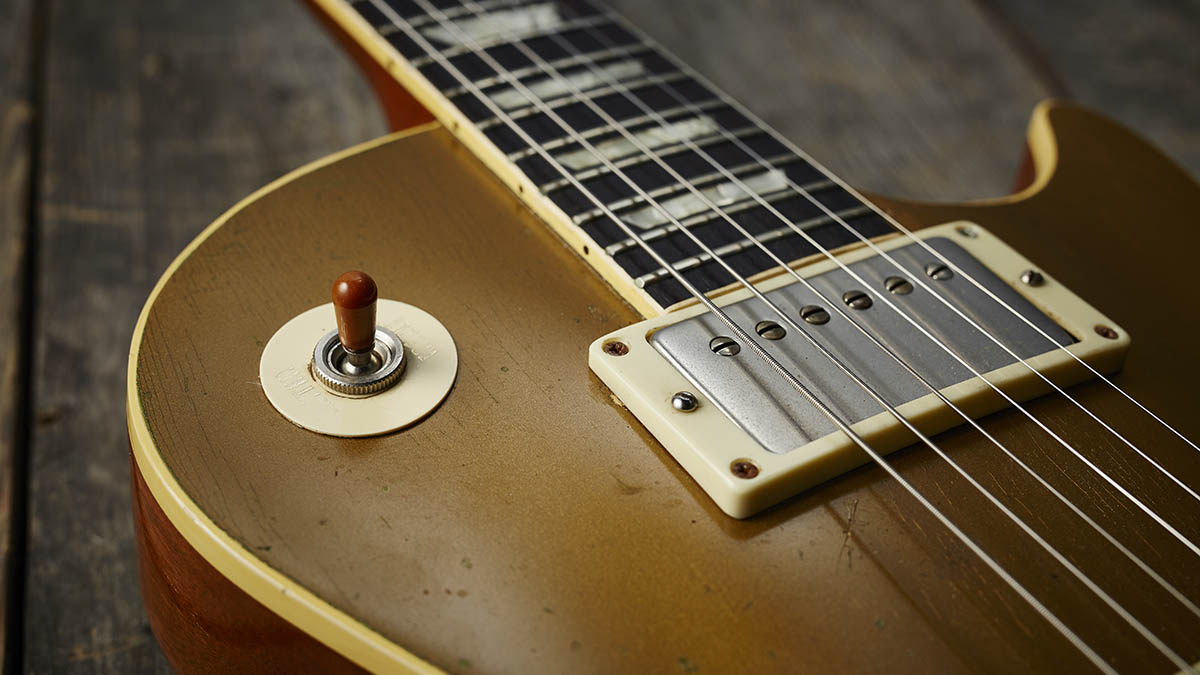
6. 1950s Wiring
On ’50s Les Pauls, the guitar’s controls can be used without negatively impacting its sound. Newer Les Pauls can become muddy when volume knobs are backed off, which compromises your ability to clean up an overdriven amp from the guitar itself and achieve a range of classic tones.
During the ’50s, Gibson soldered the tone capacitor to the volume’s centre tag (output) rather than the outer (input) tag. Simply put, there’s always some treble bleed through a tone circuit, and with a capacitor connected to a pot’s input, the signal to treble bleed ratio skews towards the latter when volume is backed off. So if your capacitors are soldered to the outer lugs, try resoldering them to the centre tags.
7. Tone Capacitors
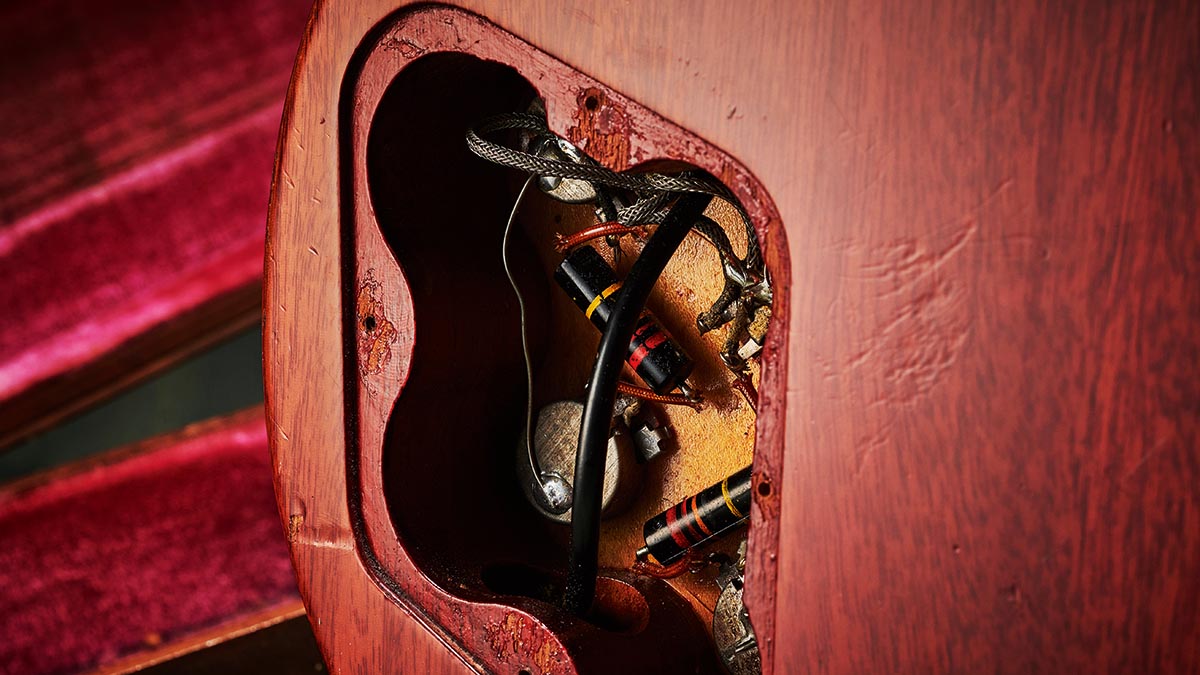
Early Sprague ‘bumble bee’ tone capacitors were paper-in-oil, but by the late 50s they were being made with plastic film. Some ’Bursts were fitted with ceramic capacitors in 1960. Very subtle differences may be discernible if you have good ears, but the impetus behind capacitor ‘upgrades’ is often cosmetic, rather than sonic.
The standard value is 0.022µF, but if you buy New Old Stock, the actual value and stated value may differ. Experiment with different values, such as 0.01µF or 0.015µF to reduce treble bleed and open up dull neck pickups.
Conversely, a 0.047µF, 0.068µF or 0.1µF may sweeten the top‑end of a harsh bridge pickup. Try hooking up a bunch of capacitors to a rotary switch to make A/B comparisons and choose the ones that work for you.
8. Pickup Swapping

Of all the contributory factors, pickups have the biggest influence on the tone of any Les Paul. Pickup swapping is a huge topic and clearly beyond the scope of this feature.
Those chasing vintage tone can choose from a bewildering range of options promising faithful reproductions of 1950s PAFs or even ‘improvements’ on the theme. But relatively few pickup makers get to hear genuine PAFs in vintage Les Pauls, so regard these claims with caution.
Relatively few pickup makers get to hear genuine PAFs in vintage Les Pauls, so regard these claims with caution
Metal players may prefer active pickups, such as the EMGs Zakk Wylde favours. Rockabilly players can get PAF and P-90-sized Filter’Trons from TV Jones and The Creamery, and Oil City offers a PAF-sized Firebird pickup.
Plenty of manufacturers offer PAF-sized P-90s, and hum-cancelling P-90s are widely available. For the ultimate in versatility, the Seymour Duncan P-Rails combines a P-90, humbucker and blade single coil in one PAF-sized package.
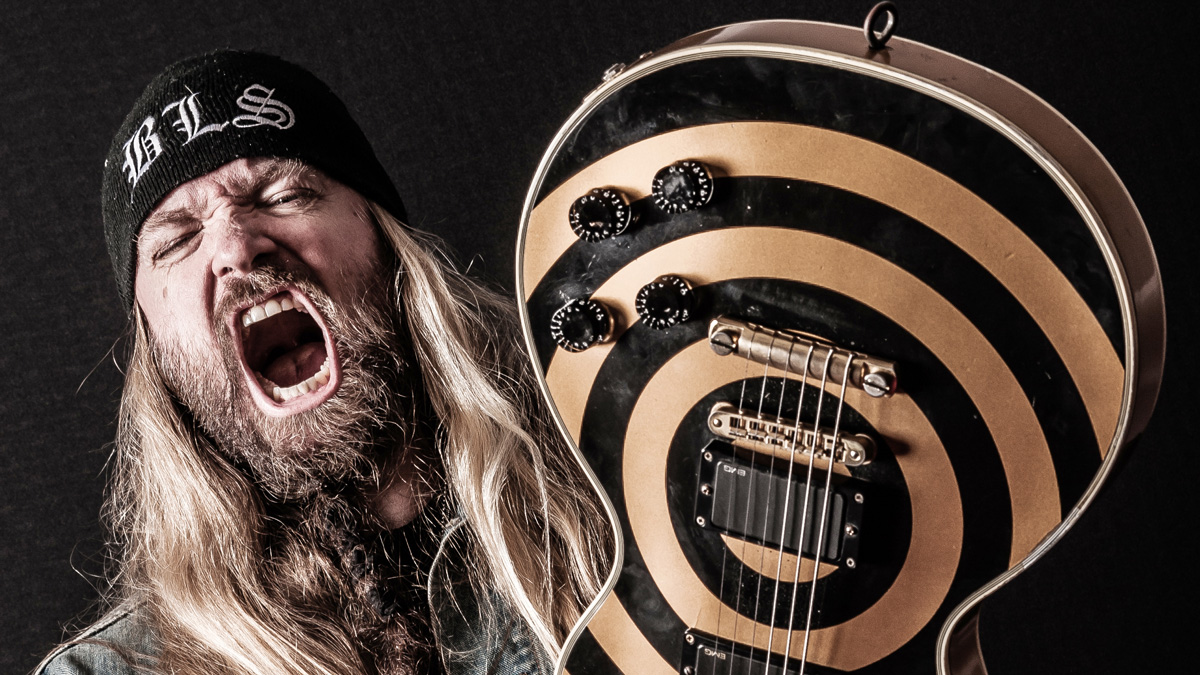
9. Pickup Mods
The modular construction of P-90s and humbuckers makes them relatively easy to modify, and it’s a cheaper option than pickup replacement. Swapping magnets is a great starting point because every grade of Alnico sounds different. Alnico III can give P-90s an early 50s tone and make a humbucker less aggressive.
Alnico V and ceramic magnets sound brighter and will make pickups louder and more aggressive. You can also change pole screws, with low-carbon steel sounding sweeter and high-carbon having more treble bite.
P-90s’ fixing screws and humbucker bobbin screws are usually brass, but they can be changed to steel for fatter mids and extra cut. Removing thick metal covers from humbuckers will improve clarity. You can leave them off or replace them with thinner and lighter covers. Lastly, oven baking can remove some of the potting wax to provide a tad more vintage-style microphony, but it’s best left to a professional.
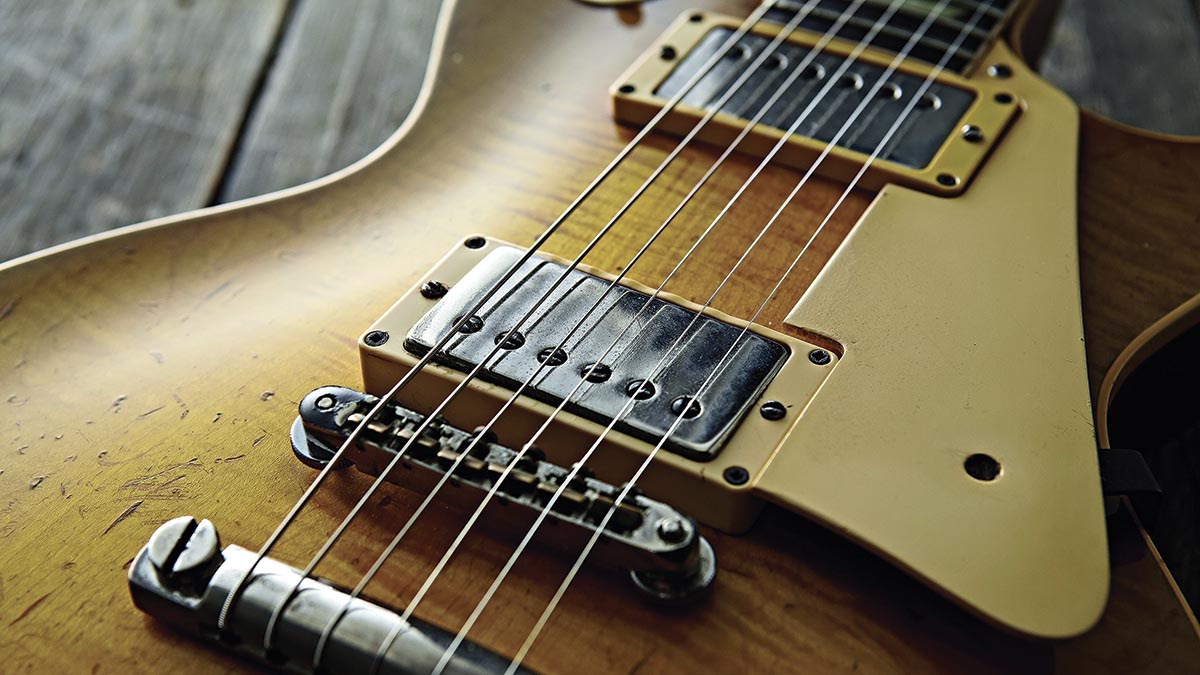
10. Pots for Pauls
Whether your Les Paul has P-90s or humbuckers, 500kohms has always been the stock value for potentiometers. Since both types of pickup can sound slightly dark in comparison to Fender single coils, the presence lift provided by 500k pots enhances clarity and definition.
Nevertheless, Gibson installed 300k pots for a considerable period of time, and if your Les Paul sounds muddy, check that 500k pots are installed before falling down the pickup-swapping rabbit hole.
Vintage pots generally read north of 500k and of the modern replacements we have tried, Bare Knuckle Pickups’ 550k pots with a 10 per cent taper are the closest in tone and response
Vintage pots generally read north of 500k and of the modern replacements we have tried, Bare Knuckle Pickups’ 550k pots with a 10 per cent taper are the closest in tone and response. If you’re less fussy, any 500k CTS potentiometer with a split shaft will do the job, but decide if long or short shafts are required.
When upgrading Les Pauls made in Asia, you’ll need to widen the shaft holes and buy US-spec control knobs to install CTS potentiometers. Push-pull and push-push switching pots are also preferable to drilling holes in the body for activating non-standard pickup settings.
11. Control Wiring
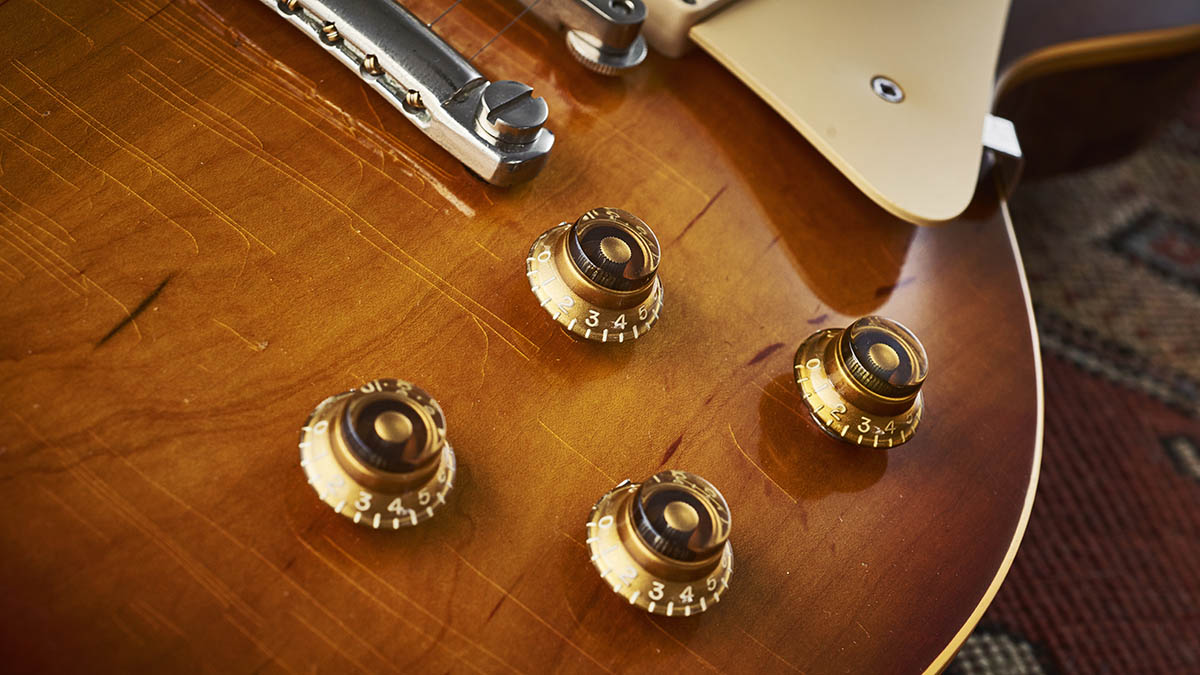
Pre-assembled wiring harnesses have become popular because they ‘drop in’ with minimal soldering required. They’re a great option for replacing printed circuit boards and generally feature CTS potentiometers hand-wired with high-quality capacitors.
A number of parts suppliers now offer these in various configurations, so check out Six String Supplies, House Of Tone Pickups, Monty’s Guitars, James’ Home Of Tone and Radioshop Pickups.
Stock Les Paul wiring is fairly straightforward, but pre-wired harnesses really come into their own for customised controls. If you need phase switching, coil-tapping or series/parallel switching, then a pre-wired harness makes a lot of sense. Six String Supplies’ Jimmy Page harness is a great option for the most complex Les Paul wiring setup of all.
12. Cut-out Fix
In the middle position, either volume control will kill the output when it’s turned all the way down with stock Les Paul wiring. Most Les Paul players happily live with it, and it allows you to do that staccato pulsing trick using the toggle switch. On the other hand, it does limit pickup-blending potential.
If you’d prefer your volume controls to function independently, simply reverse the wires on just one of the volume pots. The pickup’s hot connection moves to the volume control’s centre tag, the switch wire goes to the outer tag, and the ground connections are left unchanged.
13. Switching Switches
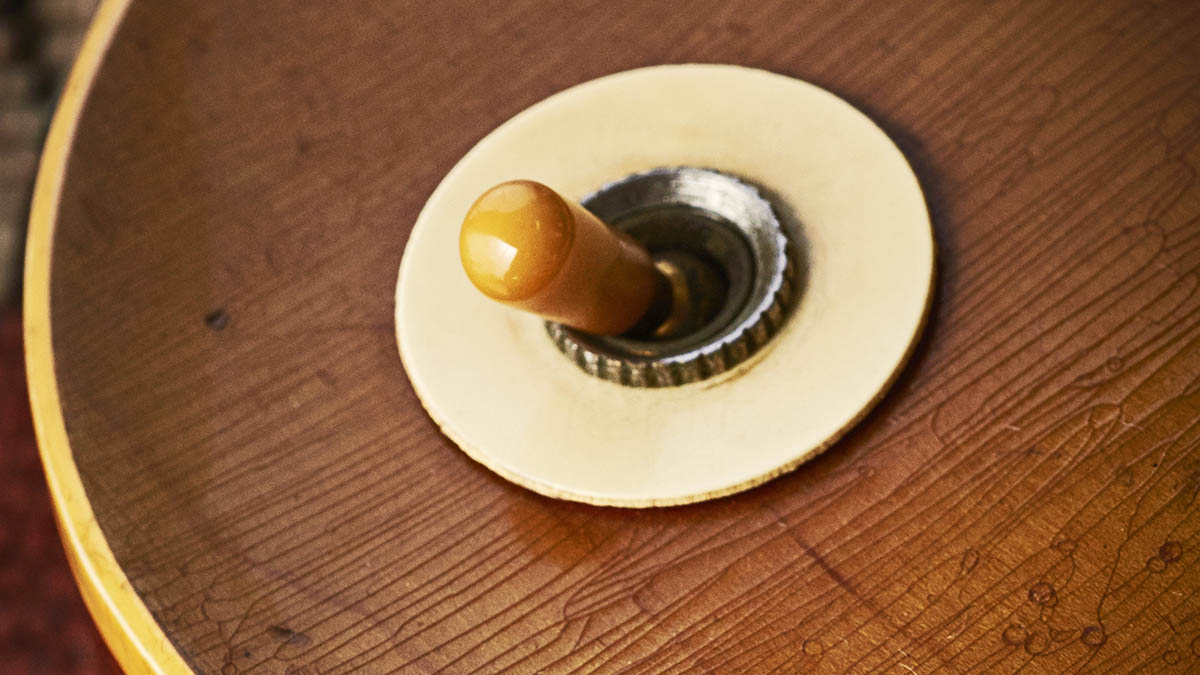
Switches are subjected to mechanical stress and can occasionally fail. Some don’t feel that good and others are prone to noise. Whatever the issue, upgrading to a USA-spec Switchcraft can improve things. Wiring them up is fiddly, but pre‑wired switches are available from Six String Supplies, and Fake 58 offers excellent vintage replica switch tips.
If your guitar was made in Asia, the existing switch hole may need to be enlarged. Also check out the Free-Way six-position switch, which allows you to access all those tricky wiring settings from the switch rather than push-pull pots. Jimmy Page has one in his Les Paul Custom.
14. Nut Stuff
There are various reasons to consider nut replacement, but the most valid is improving tuning stability. Les Paul strings are obliged to veer off at angles between the nut and tuners, and to make this work, the nut needs to be expertly cut to minimise friction. This is why so many Les Pauls tend to go out of tune and tuners are often needlessly changed when the nut is the actual cause.
Replacing a nut requires specialist files, but it can greatly improve tuning stability and playability. Choose between Corian, Graph Tech, bone or mammoth tusk. Metal players may prefer brass, and the vintage-inclined should try nylon. If you’re cursed with perfect pitch, consider a Buzz Feiten conversion. Nut material does impact tone, but only when you’re playing open strings.
15. Plastic Parts
An aftermarket-parts industry now offers plastic fittings of varying quality. Most are targeted at players who want their Les Pauls to look more authentically vintage, and plenty of high-end R8, R9, Collectors Choice and Murphy Lab models end up being cosmetically enhanced. M69 pickup rings are especially fetishised, with die-hards insisting on butyrate plastic and all the vintage-correct mould markings.
In contrast, some opt for bright colours, customised pickguards, or dispense with plastic parts in favour of wood or metal replacements. Whether you’re creating a vintage replica or shooting for an individual or contemporary look, no specialist tools are required. But just to be clear, upgrading plastic parts won’t improve your tone.
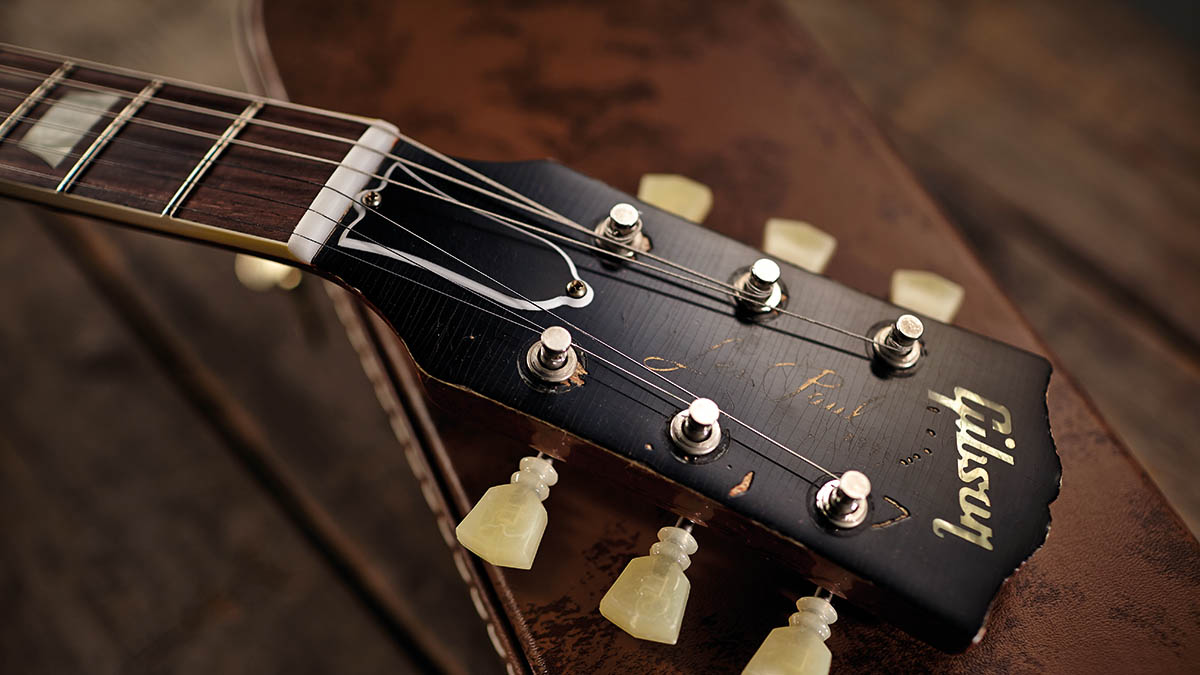
16. Tuners
Players have been swapping tuners on Les Pauls for so long that even in the vintage ’Burst market, an old set of Grover or Schaller tuners isn’t necessarily detrimental to a guitar’s value. But DIY die-cast tuner conversions often resulted in headstock damage, as holes were drilled out to accommodate wider units. Conversion bushings allow you to reinstall vintage-style tuners – and for that shrunken keystone look, check out Fake 58.
A decent set of vintage-style tuners should do a more than adequate job, but die-cast tuners may feel more precise. Added mass can enhance sustain at the expense of dynamics and neck heaviness, but it’s pretty subtle. Also consider locking tuners if you break a lot of strings.
17. Bigsby Installation
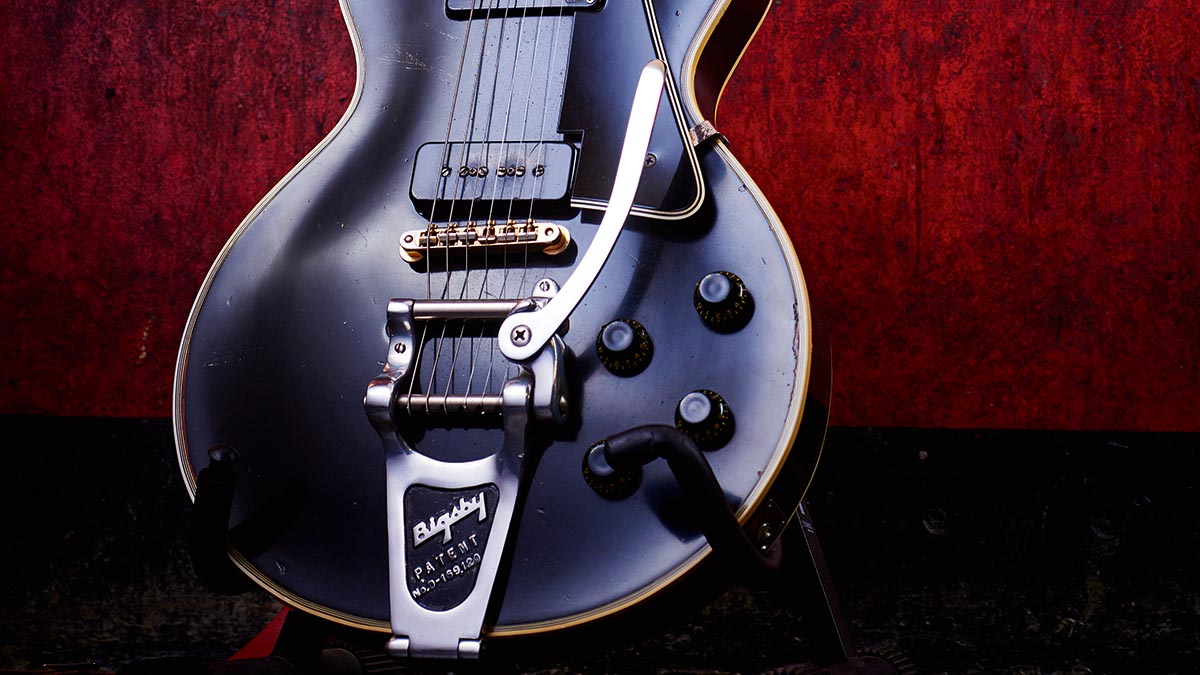
Just as the ’80s was the decade of the locking vibrato, the ’60s was the decade of the Bigsby, and many vintage Les Pauls ended up getting ‘snake bit’. Les Pauls do look undeniably cool with a Bigsby and you’ll need a B7 with the front roller to achieve the necessary break angle over the bridge.
These days, there’s no need to drill extra holes to fit a Bigsby. Check out Vibramate brackets, which attach in place of the stop tailpiece, and at the back the hinge fixes to the body via the strap button crew. It’s a quick and easy install that’s fully reversible.
18. Vibrato Options
For Les Paul players requiring a decent vibrato, there are now options besides a Bigsby, and those nightmare-inducing Floyd Rose conversions are hopefully consigned to the past. There are several options to choose from, including the Duesenberg Les Trem, Goldö LT2, Schaller ‘Tremolo Les Paul’, Stetsbar Stop Tail and Floyd Rose FRX.
These are mounted using the existing stop tailpiece bushings, and besides the FRX’s optional locking nut, no additional holes are required. These vibratos are only suitable for non-wraptail Les Pauls, and if you change your mind, they’re fully reversible.
19. Jack Plate
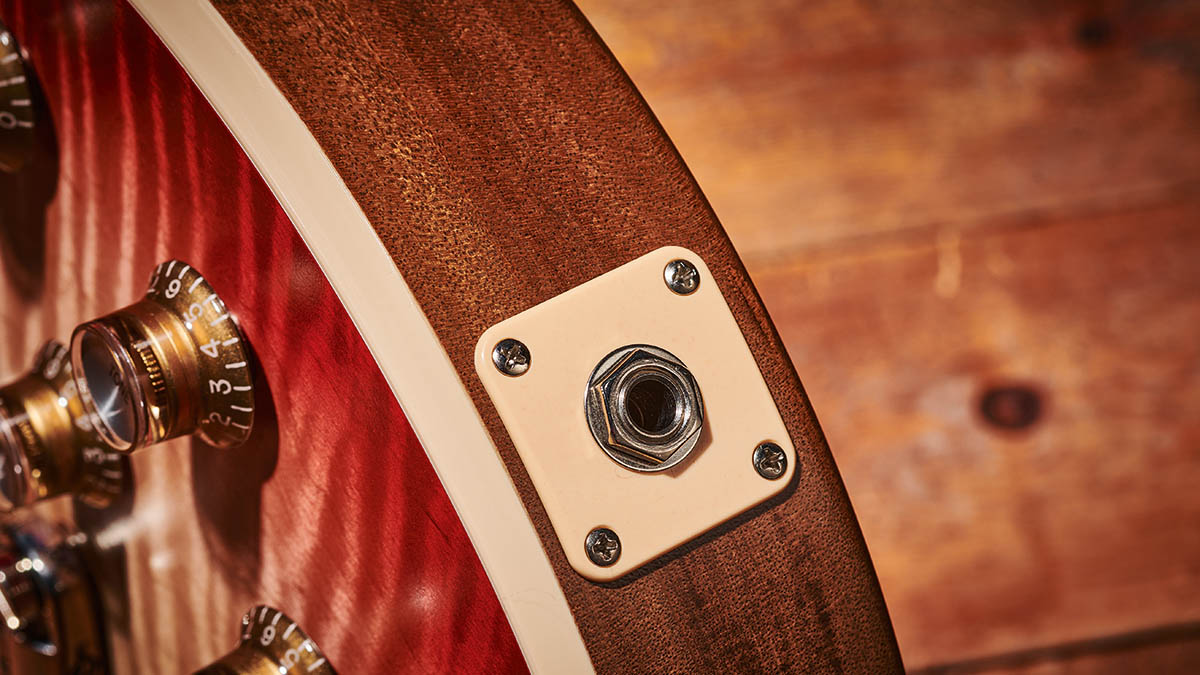
All guitars have their weak spots and the jack socket plate is even more prone to breakage than the headstock. After all, most jack plates are made from thin and brittle plastic. Fortunately, it’s far less traumatic and much easier to fix when they do get damaged.
For a permanent repair, ditch the plastic and fit a metal plate instead. You should be able to find one that lines up perfectly with the existing screw holes. If you’re keen to retain the classic look, fix a metal plate under the plastic one for added strength.
20. Pickup Adjustment
P-90 and PAF-style pickups really need to be carefully set up to bring out their best tones. P-90s often have springs or foam on the underside, which allow for easy height adjustment. Once you’ve settled on the optimum distance from the strings, we’d suggest measuring the gap and replacing the springs or foam with wood shims. With humbuckers, the end screws are your only option.
Once you’ve decided on the overall pickup height and achieved an even balance between low to top E strings, try finessing the string-to-string response by adjusting the pole screws. Using keen ears and a screwdriver, you can make those pickups really sing and your Les Paul may seem easier to play.
Huw started out in recording studios, working as a sound engineer and producer for David Bowie, Primal Scream, Ian Dury, Fad Gadget, My Bloody Valentine, Cardinal Black and many others. His book, Recording Guitar & Bass, was published in 2002 and a freelance career in journalism soon followed. He has written reviews, interviews, workshop and technical articles for Guitarist, Guitar Magazine, Guitar Player, Acoustic Magazine, Guitar Buyer and Music Tech. He has also contributed to several books, including The Tube Amp Book by Aspen Pittman. Huw builds and maintains guitars and amplifiers for clients, and specializes in vintage restoration. He provides consultancy services for equipment manufacturers and can, occasionally, be lured back into the studio.

